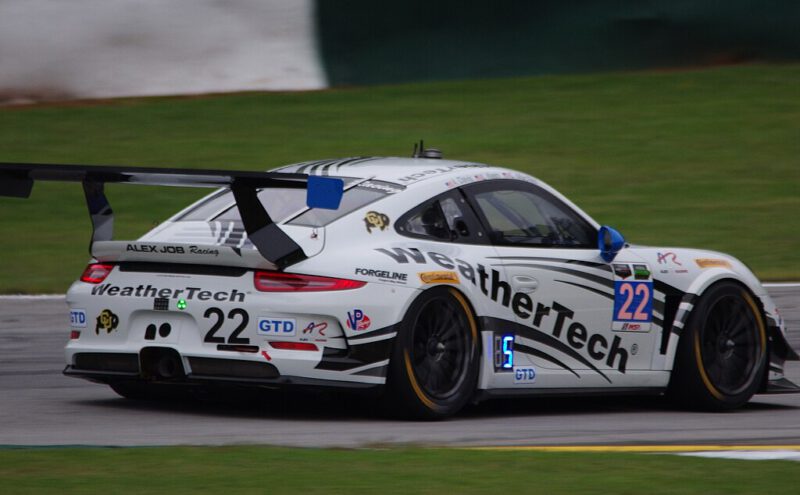More consideration and technology go into creating car mats at WeatherTech than its competitors. Its extensive and innovative product offerings highlight its industry leadership, but the way WeatherTech makes its catalog is more interesting. What’s the secret behind the success that’s worth knowing? How can other manufacturers use WeatherTech’s expertise to inspire new technologies and automation?
Who Is WeatherTech?
The manufacturing giant WeatherTech calls Bolingbrook, Illinois its home, where it makes its famous WeatherTech mats. Its manufacturing operations embrace the future by incorporating modern tech to incredible levels. All the while, it increases the value of its workforce and product quality.
WeatherTech prides itself in being American-powered, treasuring the value of stateside workers and nationally sourced materials. It makes a company feel homier when the employees building their skills and working with the products are more local. They craft a host of items, including:
- Interior and exterior vehicle protection
- Hands-free tablet and phone accessories
- Home tools like under-sink mats and soap savers
- Germ protection accessories
- Pet products, like feeders and car protection
- Golf cart products
WeatherTech has countless templates to ensure product compatibility with every vehicle, manufacturing for everyone, including Kia and Volkswagen. The manufacturing cycle is an astonishing insight into the future of production and the quality of items buyers could expect. Its product line has a broad scope, but there’s one uniting thread — automation.
What Technologies Power WeatherTech?
WeatherTech strives to make products for all OEMs, but how can it mass-produce quality products accurately if some vehicles are newer, older or rarer than others? The answer is data.
Analysts use reverse engineering to find the most nitty-gritty secrets to a vehicle’s composition, preventing engineers from having fixed mindsets on product design. The structure holds lessons everyone across disciplines — including educators and scientists — as they look to this type of manufacturing for future training.
Automation engineers and machinists pave the way for smart robotic implementation. Employing specialists with modern automated machinery and lifecycle management qualifications helps the company transition to an even more advanced setup. The staff collects as much information about the machines as possible to find ways to integrate other technologies more seamlessly.
Remember — not all technology has to be electronic. WeatherTech takes advantage of multiple types of technology to get the most out of its products, including:
- ISO9001 standards
- Computer-Aided Design software
- Procedural documentation software
- Computer Aided Manufacture software
- Stereolithography, also called 3D printing
- Computer numerical control machines
- Thermoplastic elastomer material
- WeatherTech-patented High-Density Tri-Extruded material
- Thermoforming
- 6-axis robots
The combination of these assets makes the production so unique. The materials WeatherTech uses allow products to be completely recyclable — a priority other companies often avoid due to extra costs. However, the absence of materials like lead and latex makes the process easier, especially with its automation setup.
How Does WeatherTech Innovate the Sector?
Every good manufacturing outfit has a balance of manual and automatic research and development. WeatherTech uses tools that scan vehicle floors to get data and a map. Development teams translate their findings — such as measurements and adjustments for varied car types — to raw data for processing. No tape measures are necessary.
Then, it hits the design stage. The data populates software to draft the most picture-perfect models of the mats a program can. The designers use these templates for free-form modeling to detail for accuracy and style. No need to waste raw materials creating countless versions before the finished product — engineers and designers can visualize and run mock tests on digital models before sending any files to production.
All it needs is a stamp of approval. Then, specialized machinists oversee and operate the automated machines that forge the metal mold. The machines and other assistants — like SCARA robotic arms — use advanced technology to press and cut designs. The finished product uses ovens that rotate and shape the molds on a frame, ensuring a perfect stamp each time.
However, it’s not just the manufacturing process that’s automated. Like it’s straight out of a sci-fi movie, state-of-the-art automated guided vehicles (AGVs) power warehouses for efficient and safe stocking without human assistance. It keeps workforces in more relevant and valuable positions where they can learn robotic operations and database management as AGVs and other robotic assistants catalog warehouses to run at tip-top shape.
How Will This Manufacturing Model Grow in the Future?
Many steps in WeatherTech’s manufacturing process can run in the manager’s sleep, but what would happen if all of it could happen remotely? Hyper-automation is the next phase of tech-forward companies, maximizing the brainpower of the workforce for creativity, communications, and quality assurance — just let robots do the rest. Adversely, machines could dock up and print prototypes without a single second of human intervention.
An effort like this would require investing in technological startups or internal product development.

Veilleux79 via WikicommonsSeeking external ideas isn’t an option when WeatherTech doesn’t tolerate imported piping in construction. So, every automation advancement in its walls must be self-derived, potentially inspiring other national companies to do the same to keep America a forerunner in Industry 4.0.
The business already squeezes all it can from automation and data, leading many experts to wonder how it will use AI and machine learning to improve its processes. It’s possible, but not confirmed.
However, WeatherTech embraced the possibilities of AI as its interest in cars crossed over into the esports phenomenon of competitive iRacing. WeatherTech-sponsored events have met the digital racing world as AI helps drivers train for events worldwide instead of relying on human competitors to test their skills. Collaborations like these may be outside the purview of WeatherTech’s manufacturing walls, but a little outside-the-box thinking never harmed anyone in finding new avenues to innovate.
WeatherTech as a Market Competitor in Automation
The way WeatherTech makes car and home accessories could make anyone marvel. Plus, it demonstrates the versatility of modern manufacturing and automation technologies to organizations worldwide. Its reputation happened because of its dedication to optimizing production. It pushed every electronic device to its limits.
Eventually, this design will become the standard for every sector and operation, leaving companies that paved the way — like WeatherTech — in a position never to stop dreaming bigger.










